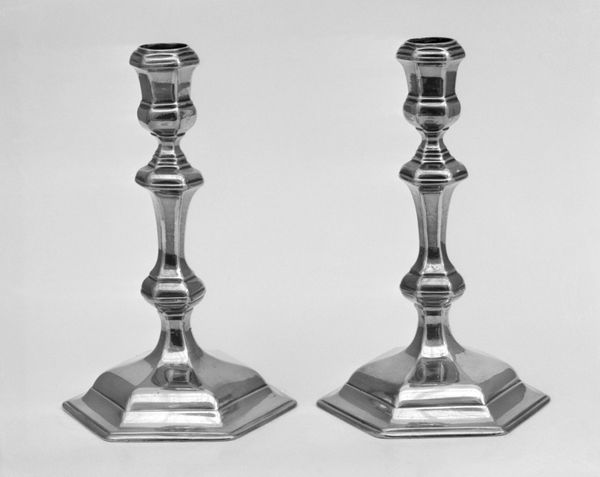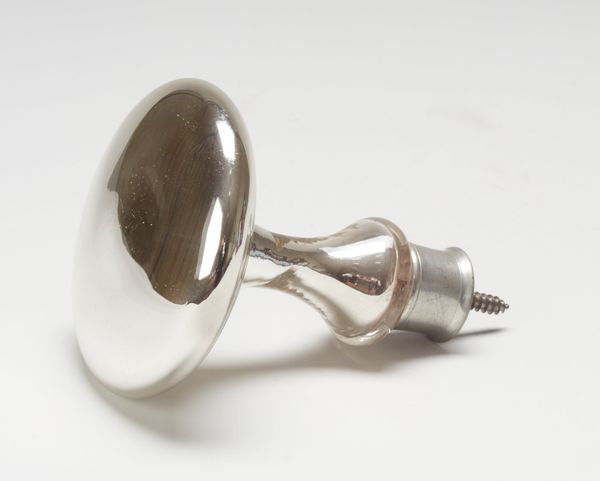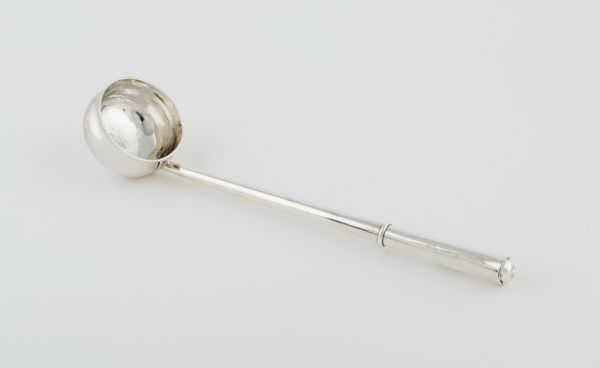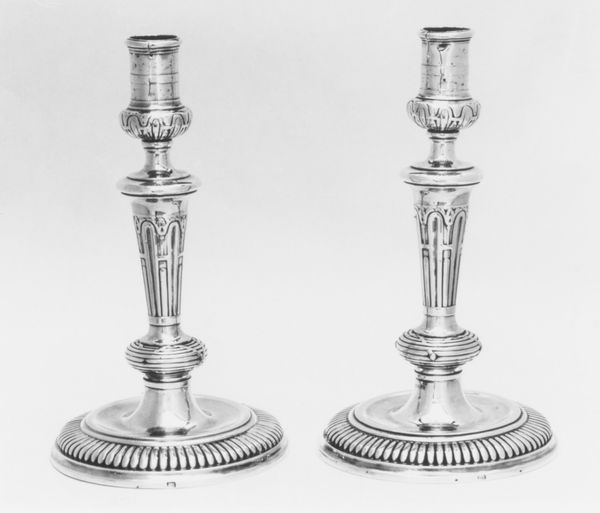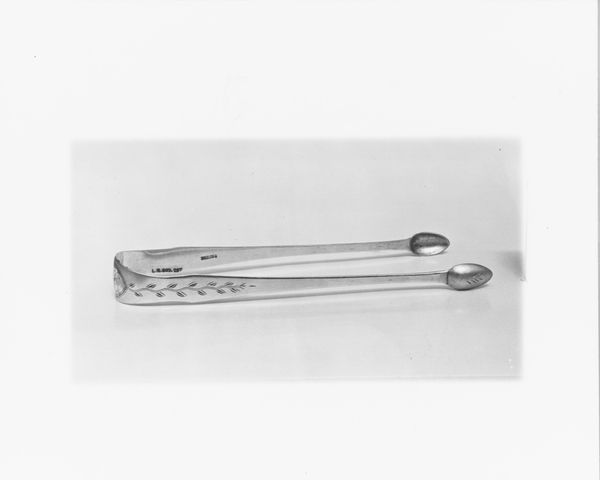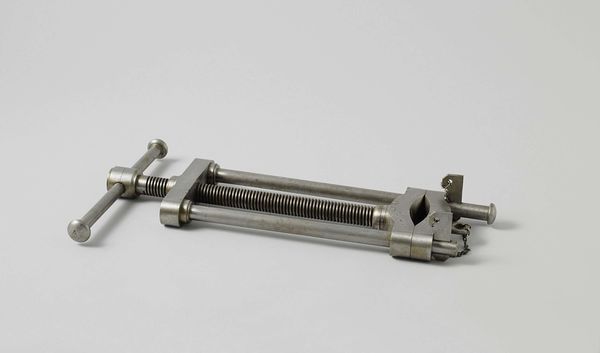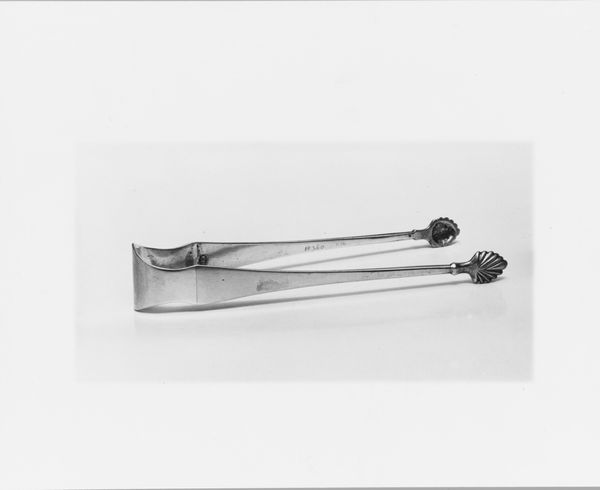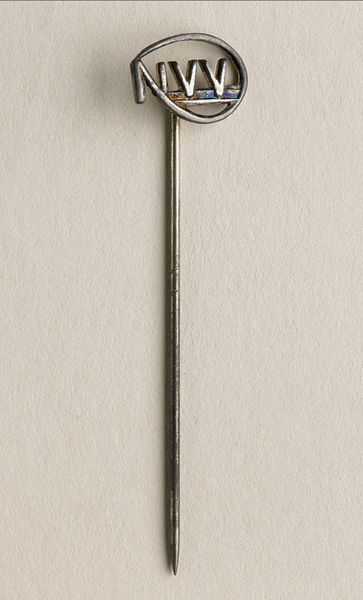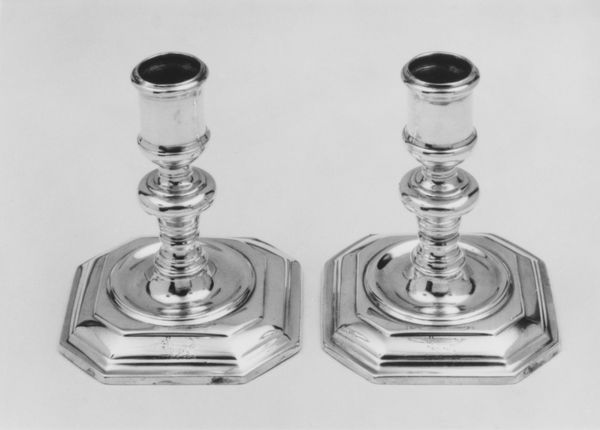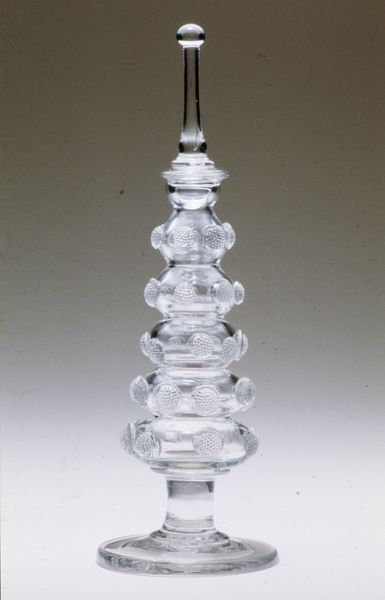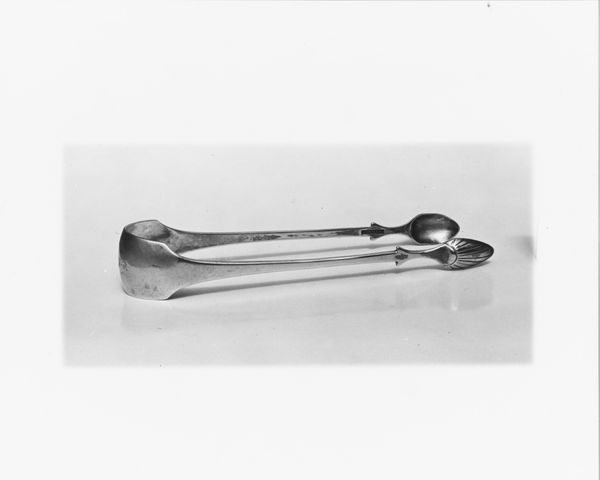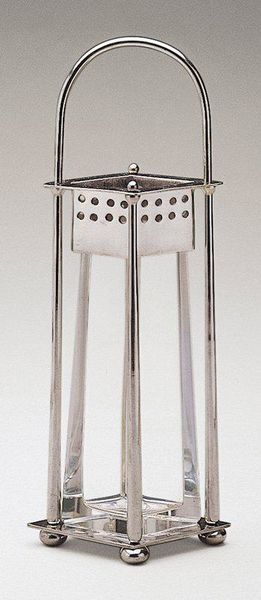
assemblage, metal, sculpture
3d sculpting
assemblage
metal
sculpture
ceramic
Copyright: John Armleder,Fair Use
Curator: John Armleder created this unusual piece, "Furniture Sculpture 190," in 1988, using assemblage techniques with metal and ceramic components. What strikes you initially about this work? Editor: Immediately, I'm struck by the sterile, almost clinical presentation. The repetition of forms, the cold metallic sheen, and the stark white background give it a very detached, unsettling quality. Curator: That aligns with Armleder’s broader project. His work often incorporates and subverts functional objects and styles. Consider the late 80s – consumerism was peaking. Galleries and the art market had more power than ever. What statement might a piece like this make at that time, given its title? Editor: It's a cynical take on domesticity, maybe. Are we supposed to find these sculptural elements beautiful or functional? The title mocks that search for function, underlining how even so-called ‘art’ can become just another commodity, a decorative item like any other piece of furniture. It challenges notions of taste and the art market’s influence in determining value. Curator: Absolutely. And notice how it plays with design conventions. The symmetry, the orderly arrangement… but then that disruptive quality of calling it 'furniture sculpture.' How does this arrangement reflect Armleder's influences in Fluxus and conceptual art movements? Editor: It has the Fluxus playfulness in defamiliarizing everyday objects, but also, a very self-aware acknowledgment of the object's status. They remind me of minimalist sculpture but given a jolt of postmodern irony. Armleder is forcing us to reconsider these familiar objects in new contexts, interrogating what constitutes art versus design, value versus disposability. The uniformity of each ‘bulb’ feels subtly subversive in itself. Curator: Indeed. It encapsulates many threads – the commodification of art, the collapse of high and low culture, even a critique of the white cube gallery space. He takes an idea and presents it with simple elegance and a distinct challenge. Editor: For me, it’s the subtle critique that resonates the most. It reveals the latent politics in even the seemingly mundane and highlights how art spaces can inadvertently uphold existing power structures. Curator: Very astute. It leaves one to consider the museum itself and our expectations within it. Thank you for that dialogue, it gives our listeners food for thought, I hope.
Comments
No comments
Be the first to comment and join the conversation on the ultimate creative platform.

